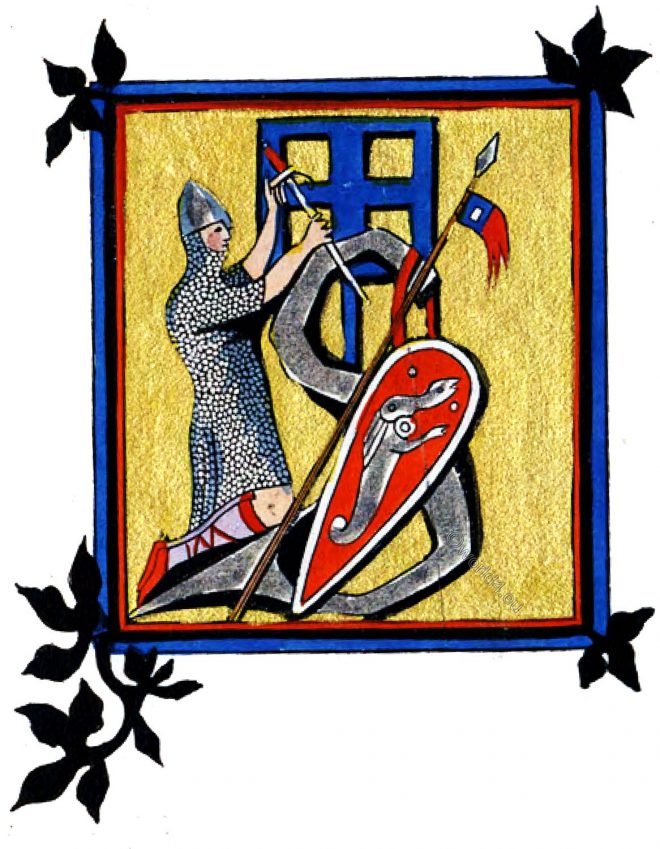Norman fashion era in England 1066-1087 according to historical sources.
Reign of William I. (The Conquerer) and Matilda of Flanders.
Category: Europe
Fashions in Europe. European Costume and Cultural History.
Textiles and Embroidery during the Tudor and Stuart Periods.
Art in England during the Elizabethan and Stuart Periods. Textiles and Embroidery by Aymer Vallance.
German court costumes with bells. First half of the 15th century.
German court costumes c. 1430. Fashion of wearing bells in this manner originated in Germany, and was one of the many fanciful details introduced at the time of Anne of Bohemia’s marriage in 1383.
The sword of James Graham, 1. Marquess of Montrose.
The sword of James Graham given by Charles I.
Wilton House. The manor house is home to the Earls of Pembroke.
Wilton House is a manor house, famous for its landscaped park and magnificent interiors.
The Norman conquest. A critical inquiry into ancient armour.
The Norman conquest. William the Conqueror. 1066. The state of Armour in Britain when William led his army of Normans.
London Nomads at Battersea. Victorian Street Life.
Photo of “London Nomads” – Gypsies around the steps of a caravan. The group includes William Hampton and Mary Pradd, taken at Battersea by John Thomson.
William Herbert, 1st Earl of Pembroke. Nobleman of the Tudor era.
The early history of the Herbert family. William Herbert, 1st Earl of Pembroke. Full length, standing, in black-slashed doublet and trunk hose, with short cloak. Tudor era. Wilton House Pictures.
Old Age and Poverty from famous The Romance of the Rose.
Dresses and Decorations of the Middle Ages by Henry Shaw
King Alfred’s Jewel, and the Ring of King Athelwulf.
The most ancient specimen of what to all appearance is a true enamelled work is the ring of Athelwulf, the father of Alfred, preserved in the British Museum, and engraved on the accompanying plate.










